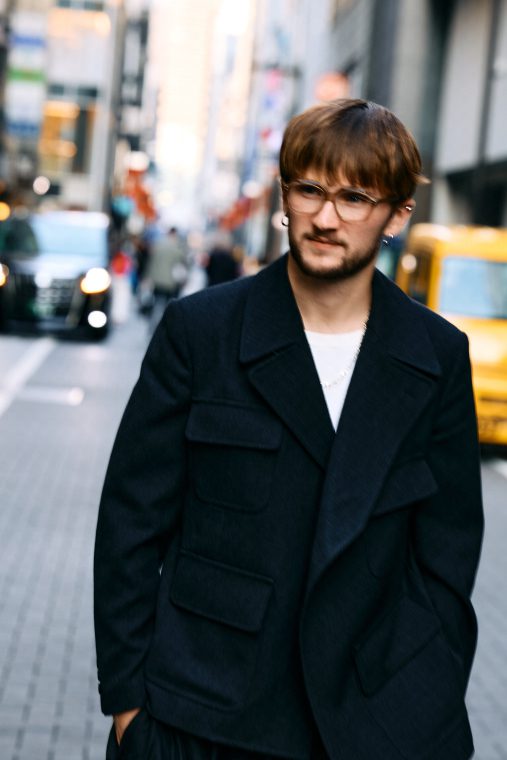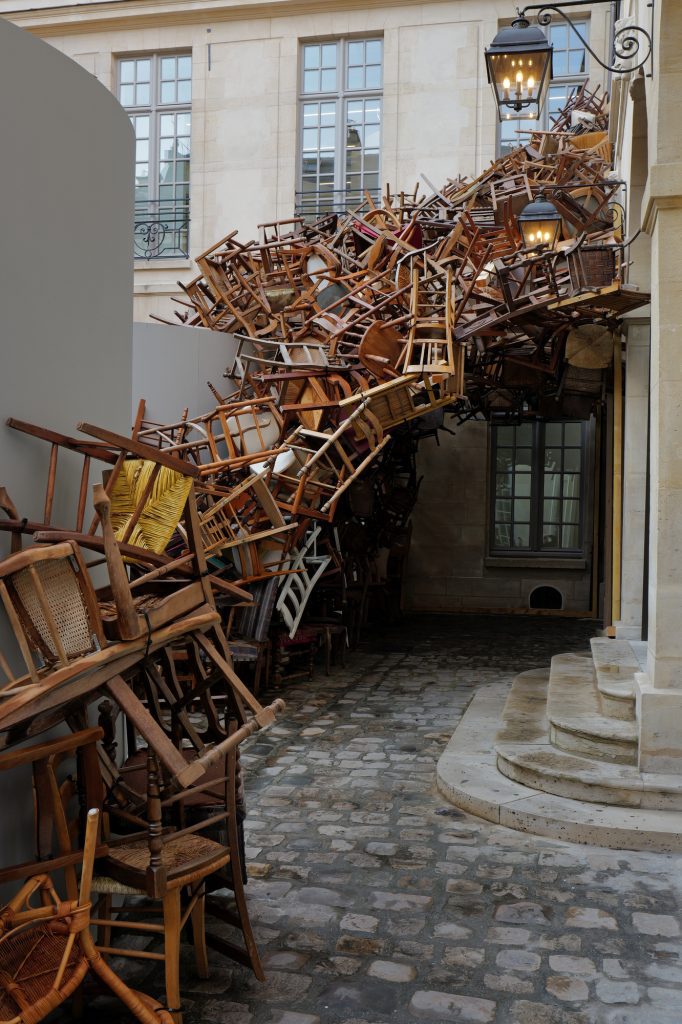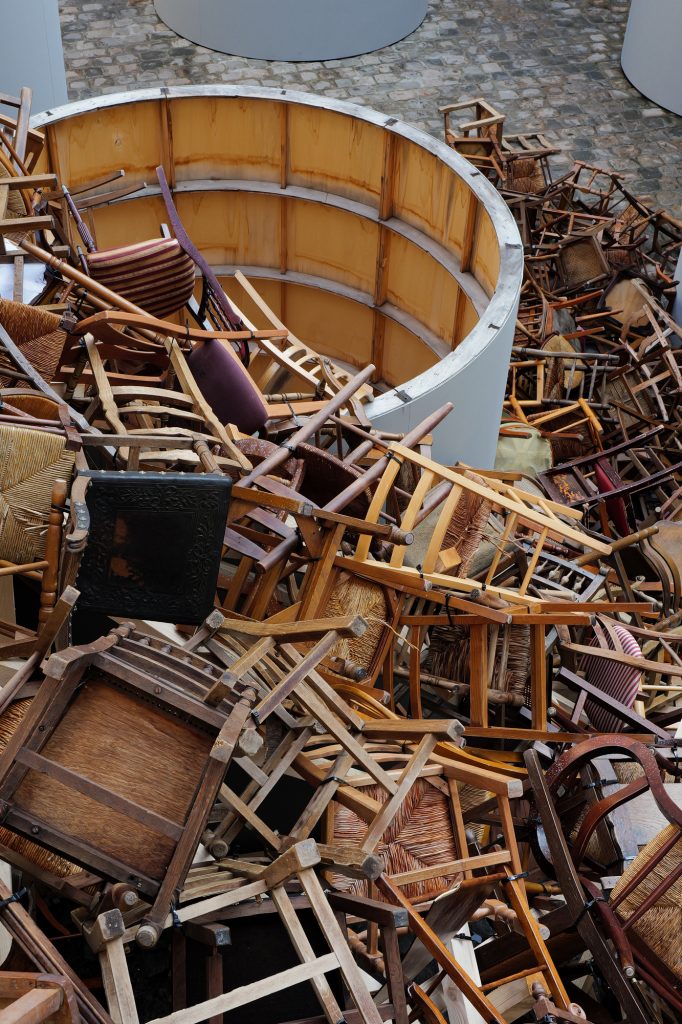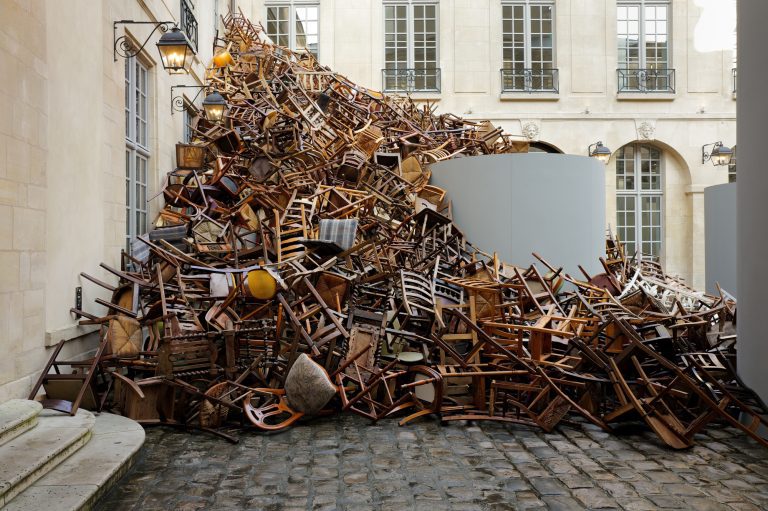


For Philéo Landowski, creativity knows no boundaries. From sculpting spaces to crafting footwear, he navigates a world where art and architecture collide. With installations that breathe life into urban environments and a passion for raw materials, PHILEO’s work speaks to a deeper, evolving vision. Here, he opens up about his collaborative ethos, his ties to Paris’s art scene, and the philosophies shaping his bold, cross-disciplinary creations.
hube: Your recent collaboration with Tadashi Kawamata at Dover Street Market Paris brought together organic materials, architectural structures, and footwear. What was your creative process in merging art and fashion, especially with such distinct mediums?
Philéo Landowski: For years, I wanted to make a bridge between my passion for contemporary art and my design practice. When I first had the idea of an installation in the DSMP courtyard, Tadashi was the first name that came to my mind, as my studio was in the 6th. I often wondered about Mennour’s galleries and am very familiar with his work.
h: In Avalanche, you worked with both recycled elements and artisanal craftsmanship. How do sustainability and heritage influence your work, and what role do they play in shaping your vision for the future of design?
PL: Sustainability is a word that’s been perverted for years now. At the core of my practice and as a base for anything we create is the idea of making good products that last and that are made in an intelligent and efficient way. We prioritise local sourcing, organic, recyclable and recycled materials, we only work with fully traceable components and materials. It’s part of our process. It’s kind of a constant work in progress; we’re doing our best, and we hope that people understand it.

